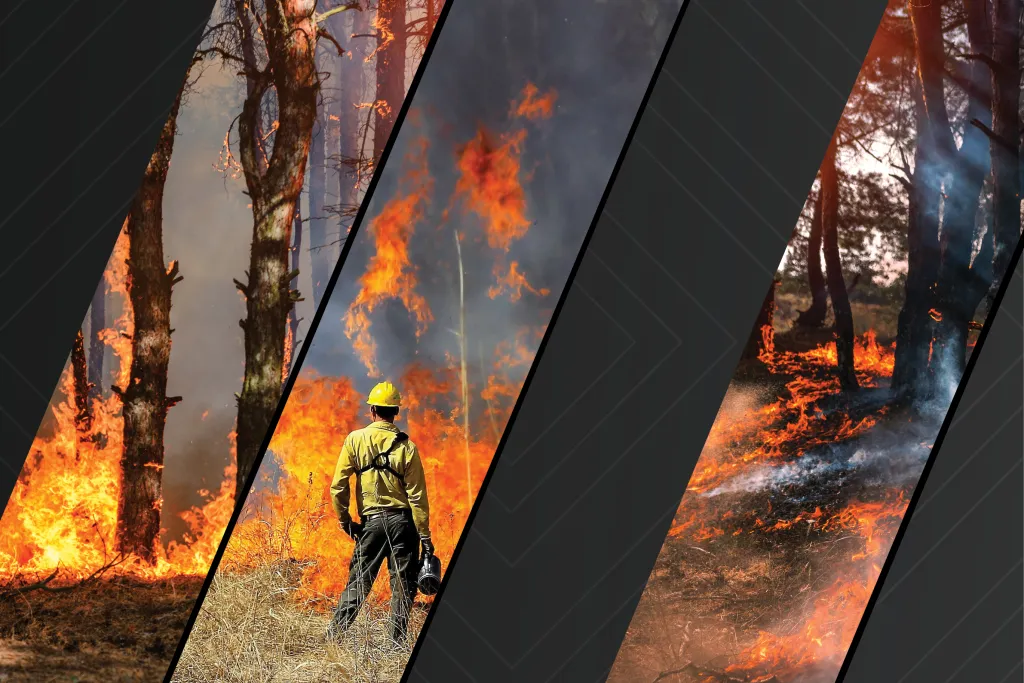Wildfires in the U.S. are getting larger, lasting longer, and causing greater amounts of damage to communities across the country.
According to the USDA, more than 10 million acres have burned nationwide since 2015, causing billions of dollars in losses. For farmers, ranchers and rural communities, the effects of wildfire are both immediate and long-term, with devastating impacts to both the environment and the economy.
Every year, USDA’s National Institute of Food and Agriculture (NIFA) funds projects that reduce the risk of destructive wildfires and restore forest health while also developing novel approaches for growers and rural communities to adapt to the increasing threat.
The research, education, and Extension efforts that NIFA supports contribute directly to how the government responds to the escalating crisis of wildfire danger. Announced in January by Agriculture Secretary Tom Vilsack, the comprehensive plan led by the Forest Service proposes a 10-year strategy that focuses on fuels and forest health treatments that use the best available science as a guide.
Using Data to Manage and Predict Future Fires
At the University of California, Berkeley, Carl Boettiger is leading a research project that will develop the computational infrastructure needed to use artificial intelligence (AI) to predict both the spread of active fires as well as the location of where future fires might ignite. Boettiger and his research collaborators hope to provide wildfire managers in California with an effective, open-source and AI-enabled tool that will change how they understand and respond to wildfires.
Sending Drones into the Danger Zone
One of the tools in the wildfire management toolbox is prescribed burning, where small fires are intentionally set to reduce hazardous amounts of fuel, among other benefits. Starting controlled fires from manned aerial vehicles like helicopters is faster and more efficient, but also expensive and dangerous. Because of this, missions are generally limited to clear daytime conditions, and therefore aircraft are only flown for up to 8 hours .
Through $650,000 of Small Business Innovation Research funding to Parallel Flight Technologies Inc. of Watsonville, California, NIFA is supporting the development of an unmanned aerial system — using aircraft commonly referred to as “drones” — that can cover more than 1,000 acres per flight/charge and operate around the clock. The system being developed promises a safer and less expensive — about half the cost — alternative to manned flights.
Improving Post-Fire Recovery of Soil and Vegetation
Restoring burned acreage after a wildfire is critically important, both for environmental and economic reasons. In soil, fire reduces its ability to retain moisture, kills beneficial microbes and other species, and destroys the organic matter vital for plant growth. Post-fire recovery often takes years.
At Oregon State University, Kevin Bladon is leading a $734,000 project to study the west side of Oregon’s Cascade Mountains — which were recently burned by large, high-severity wildfires — to assess the effectiveness of various post-fire land management strategies. The project, funded this year through NIFA’s Agriculture and Food Research Initiative, will yield key insights into how land managers can best reduce soil erosion, improve its nutrient availability, and encourage vegetation to successfully regrow.
Helping Communities Better Adapt to the New Reality
Over the last century, as human settlements have continued to expand into fire-prone areas, communities have developed various approaches in how they respond and adapt to wildfire. Those approaches are often shaped by the social conditions and economic considerations within the community itself, which can translate into situations where neighbors — who share boundaries with a forest — adopt competing adaptation strategies
With funding from NIFA’s McIntire–Stennis Capacity Grant program, Catrin Edgeley, a natural resource sociologist at Northern Arizona University, is seeking to explore this dynamic further. By better understanding the different motivations and challenges that communities in Arizona and New Mexico experience with fire adaptation, Edgeley hopes to establish which approaches are more effective for forest managers, government officials and community members in producing consistent and collective action.

